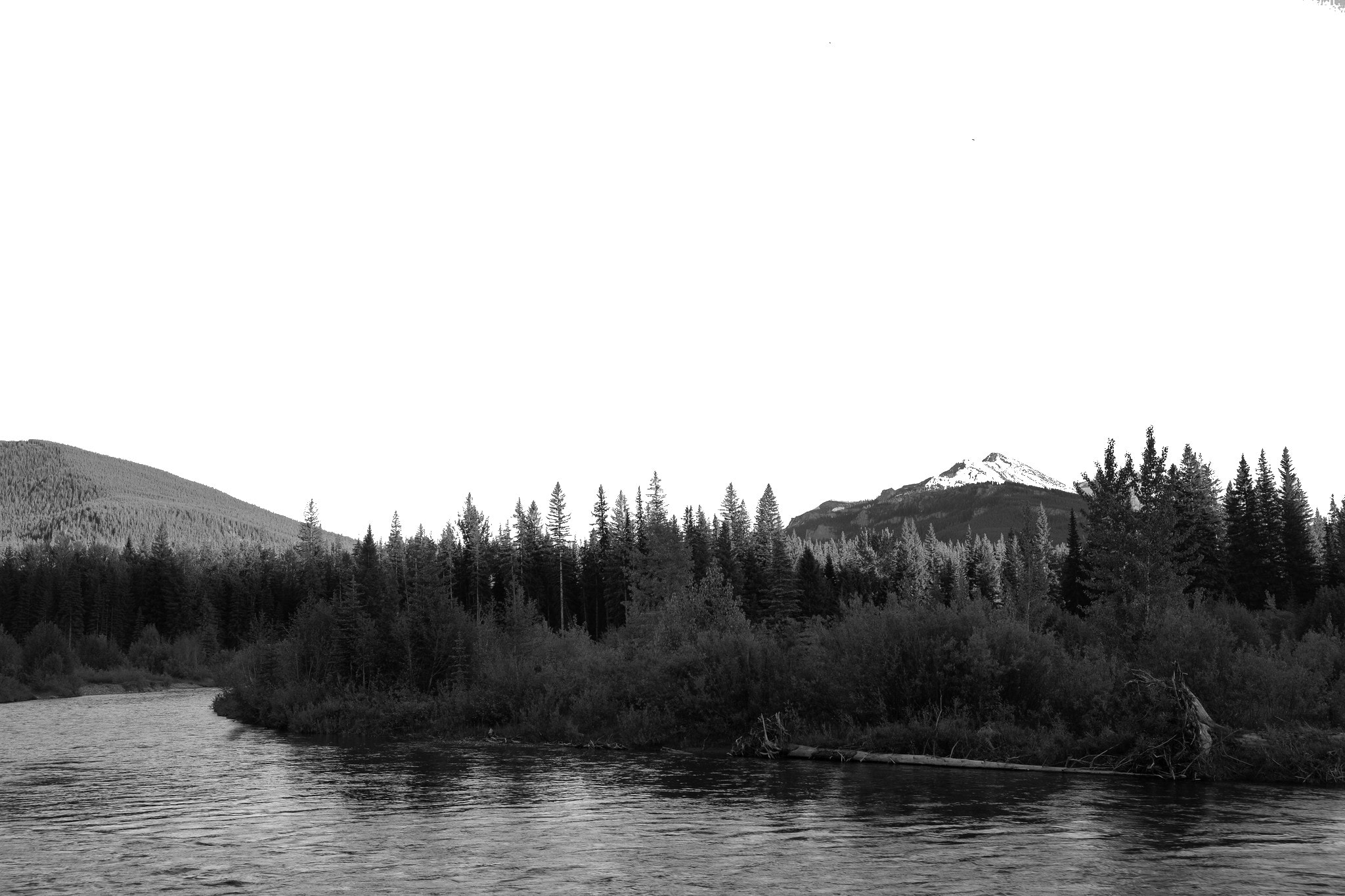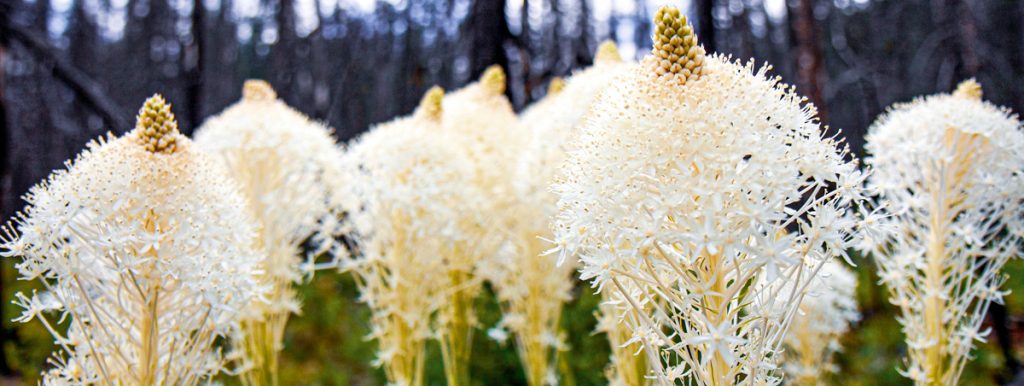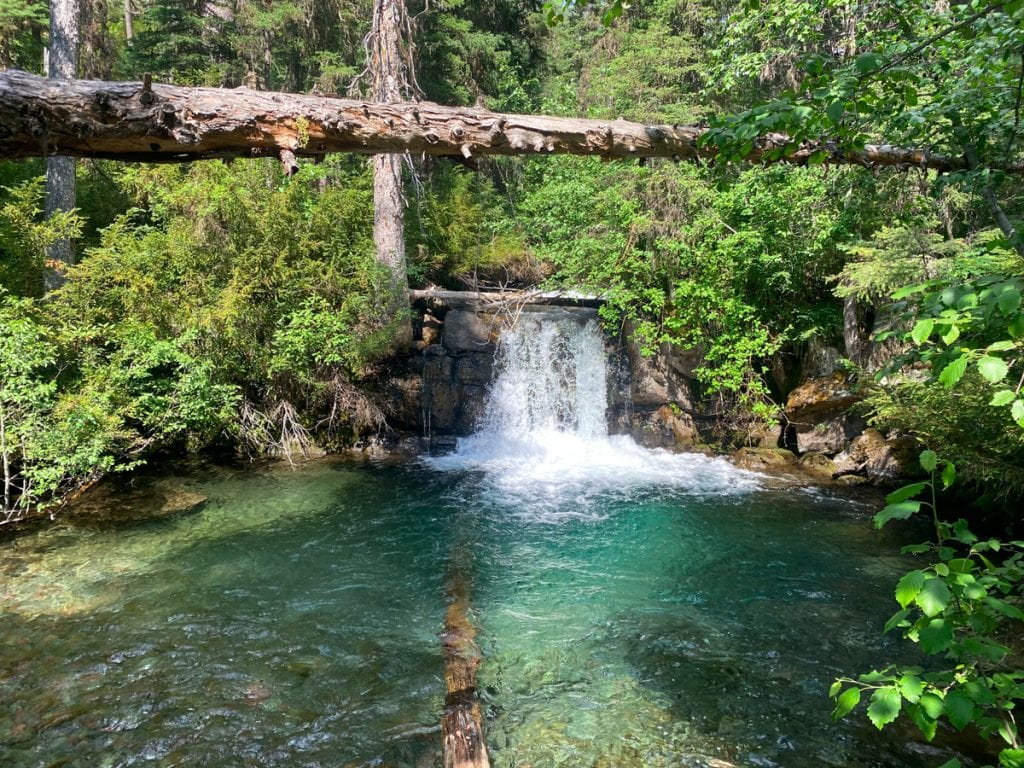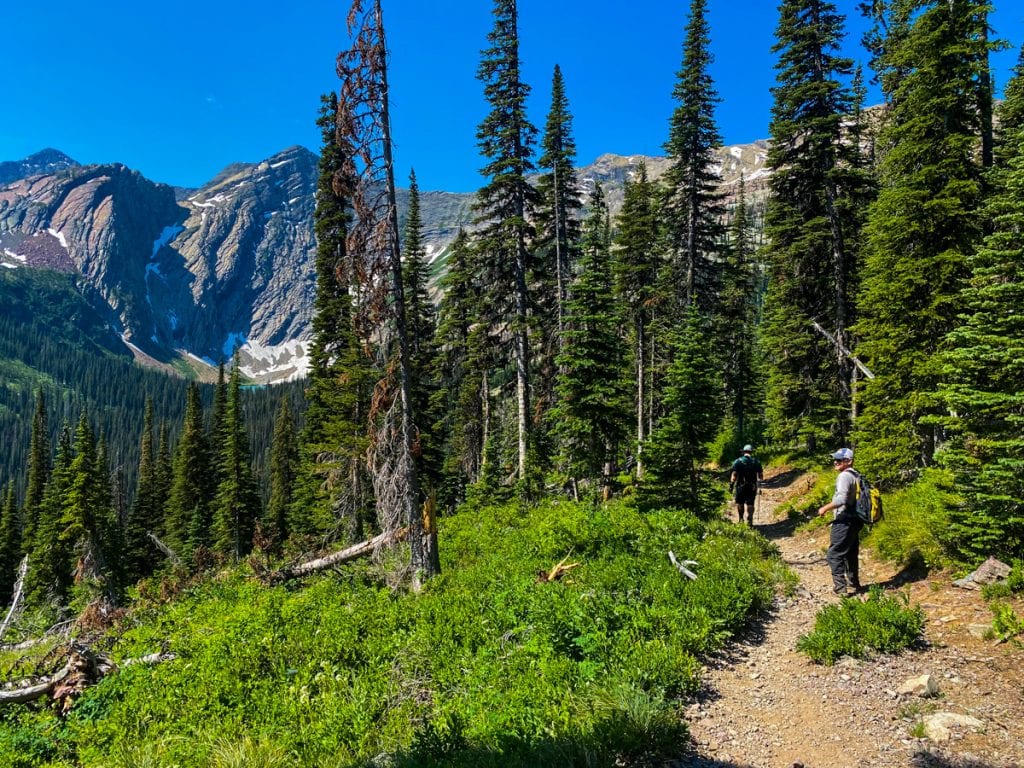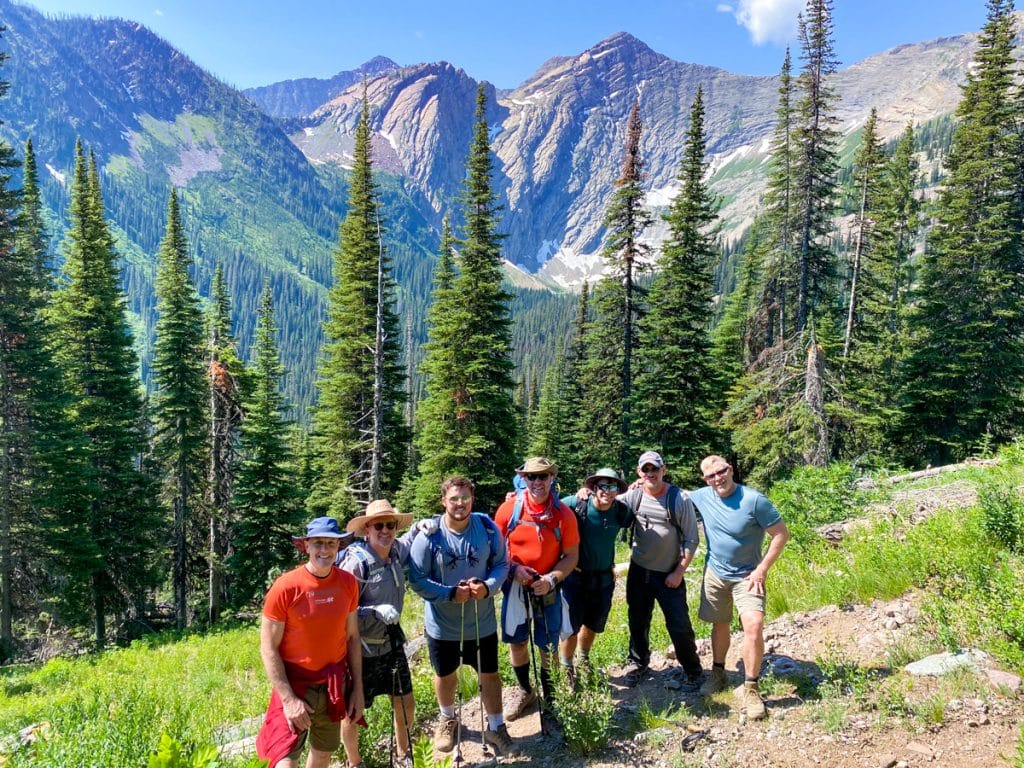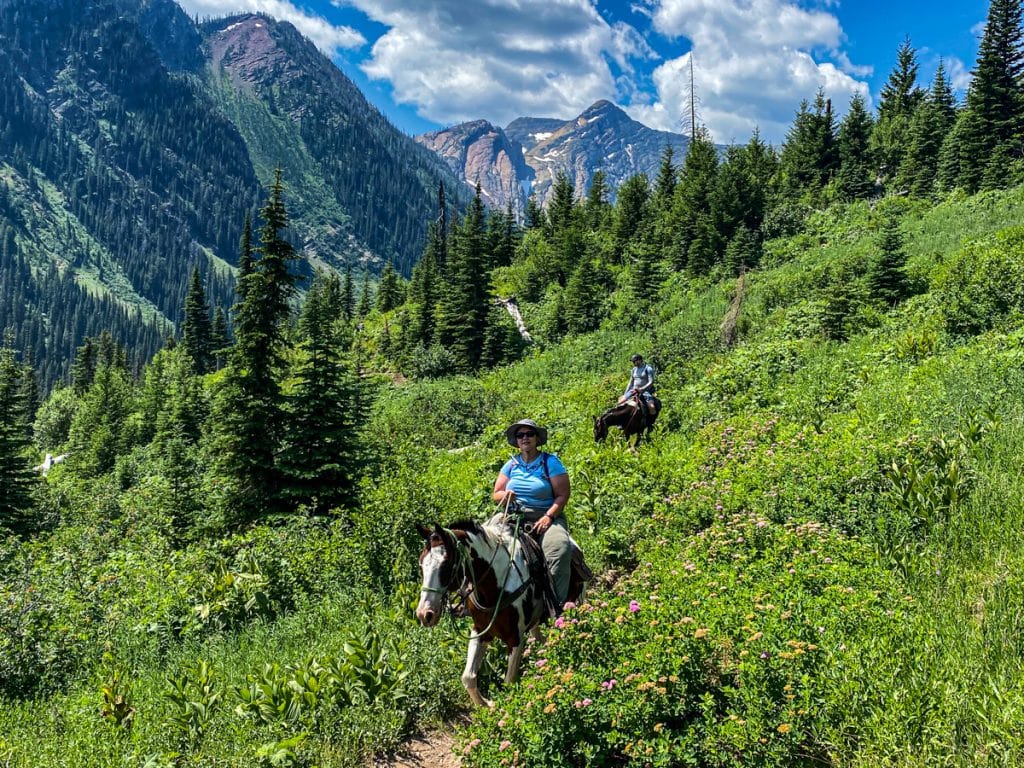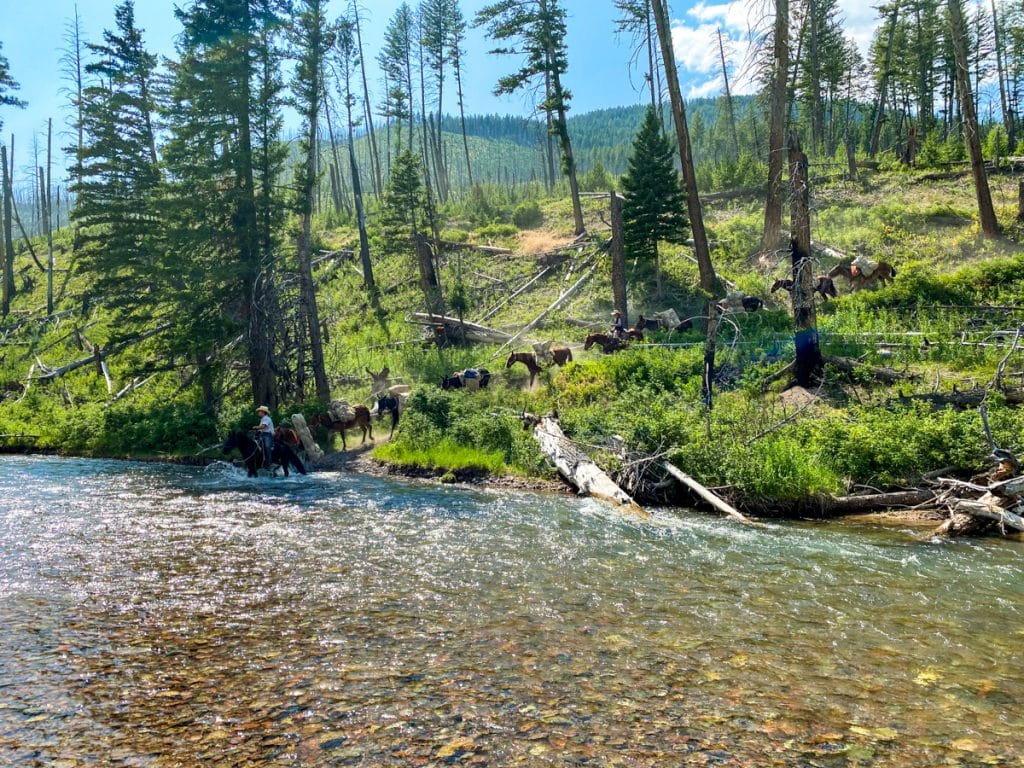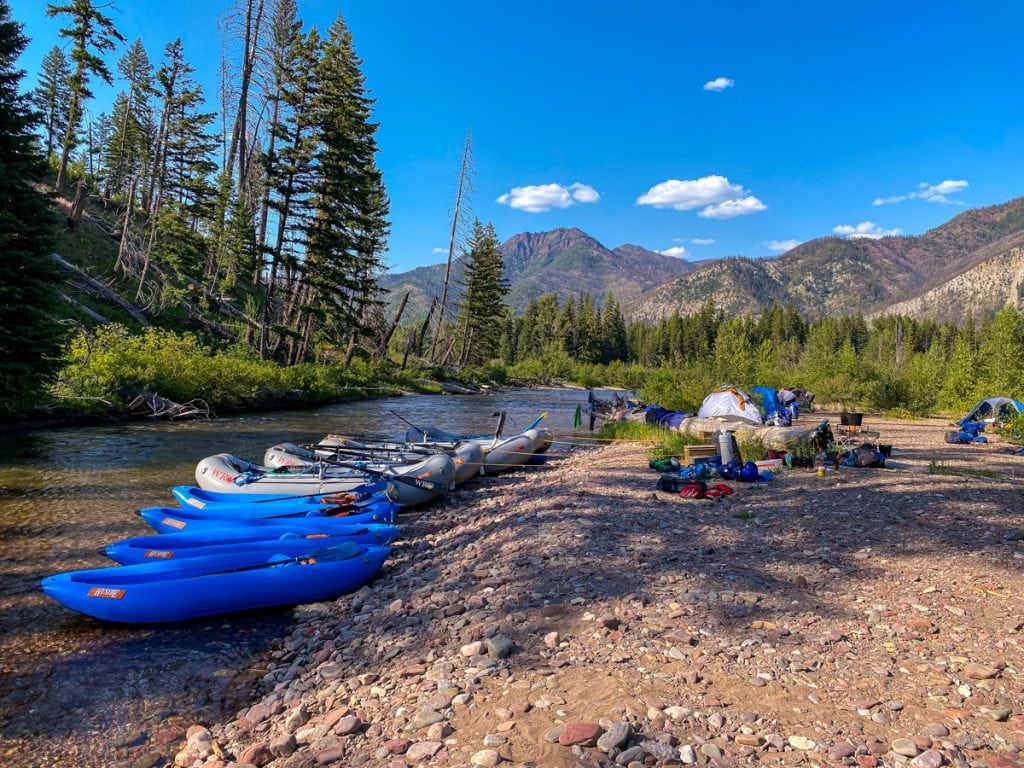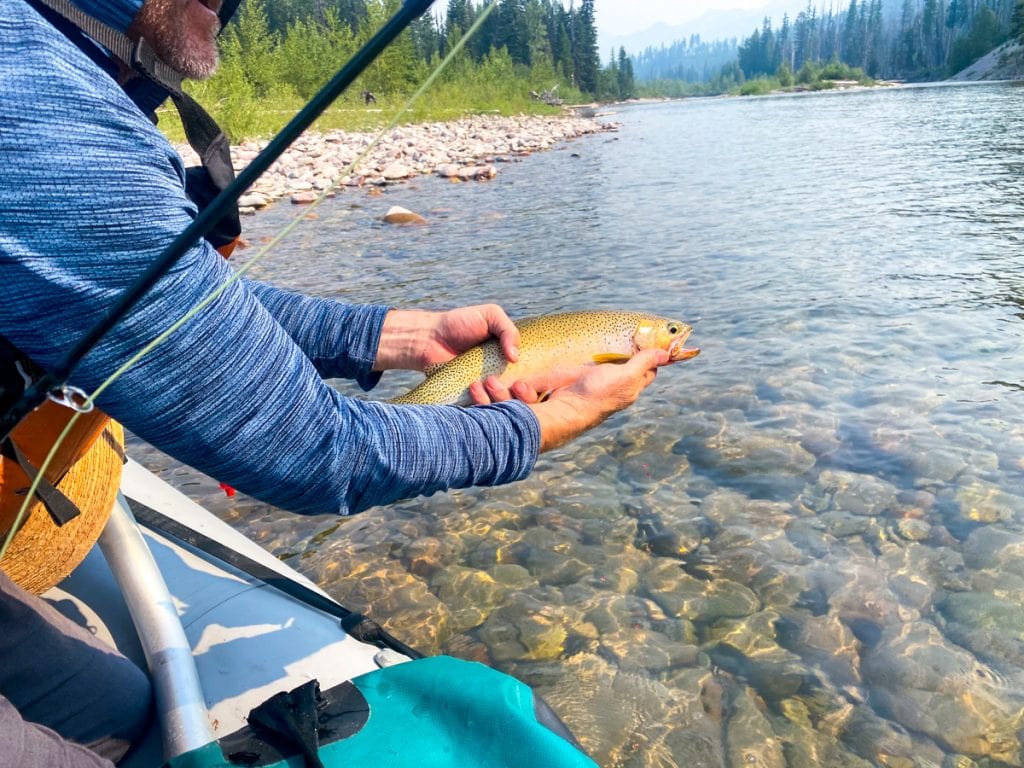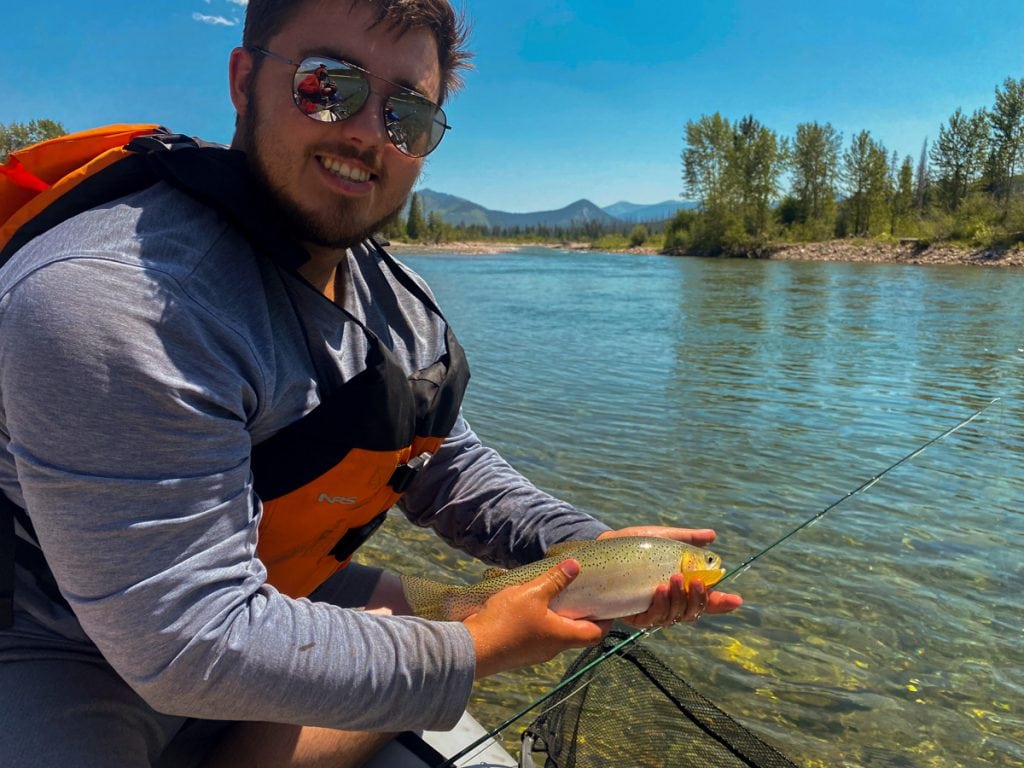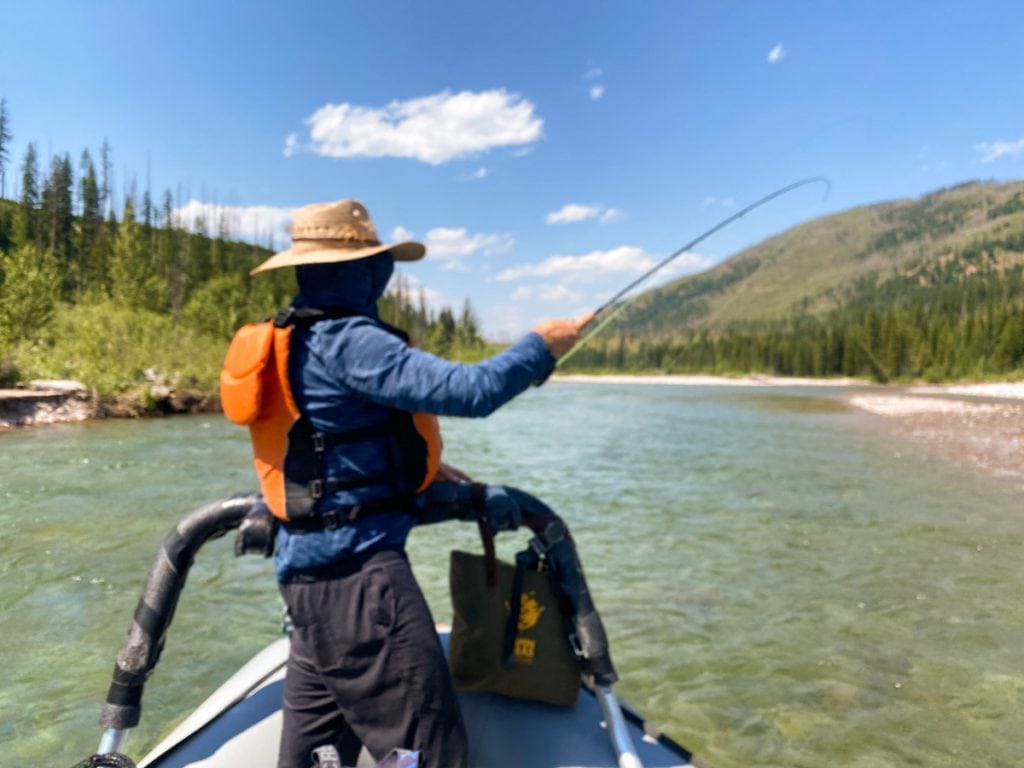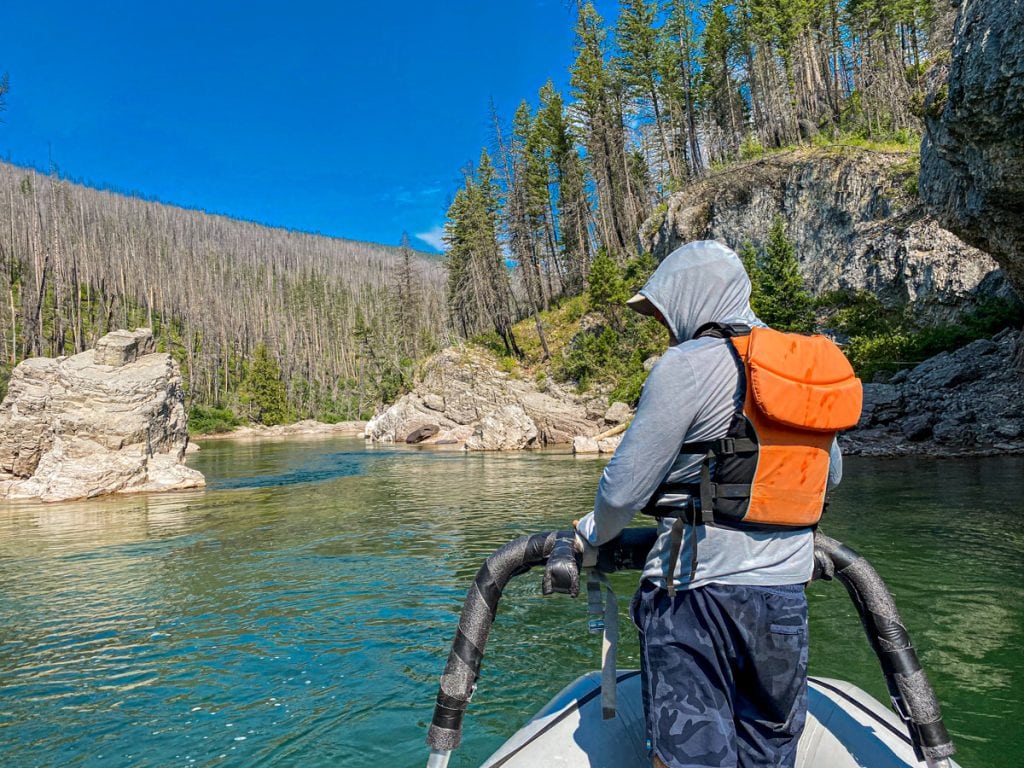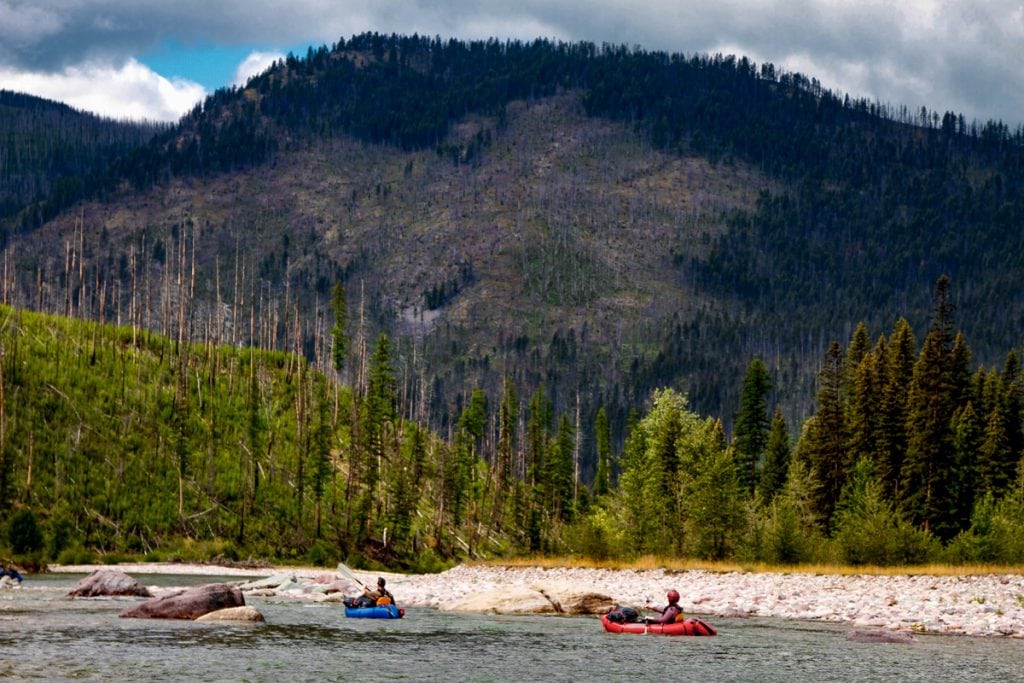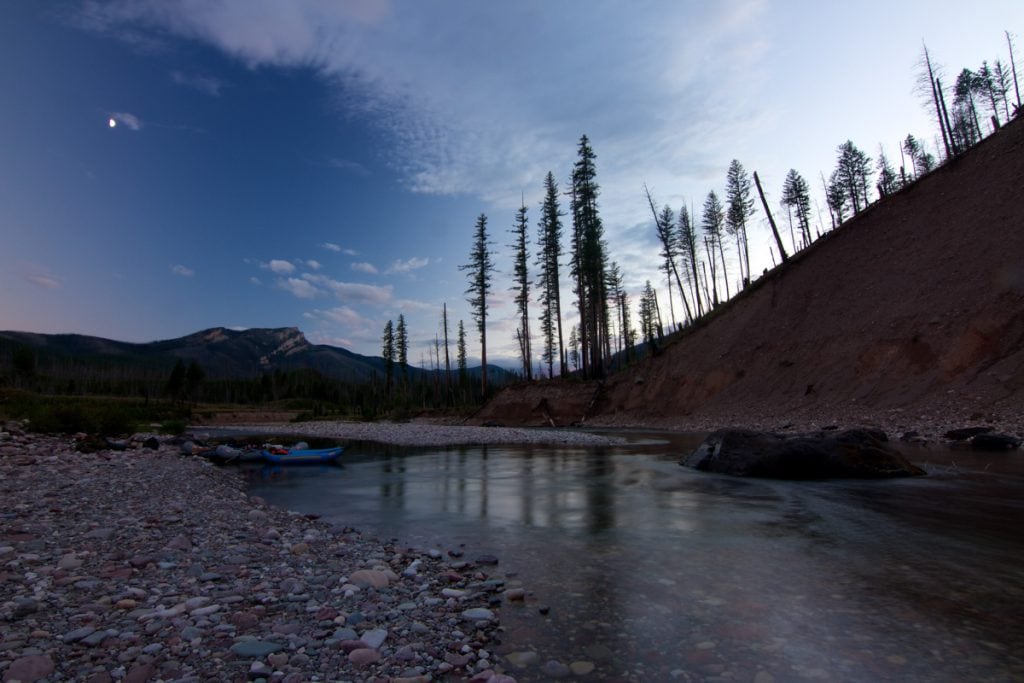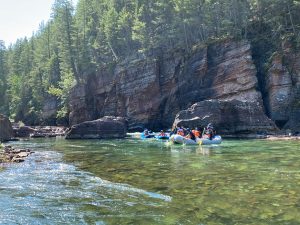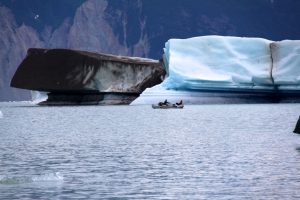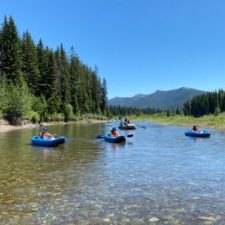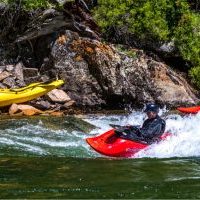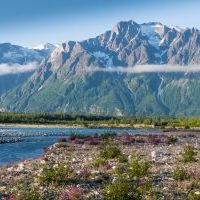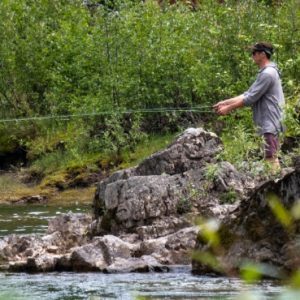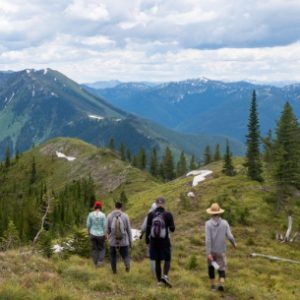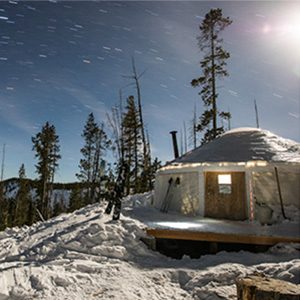Overview
Hike past pristine mountain lakes and snow-covered peaks. Cast for native trout along grassy meadows bursting with wildflowers. After a few days of meandering river time, feel the exhilaration of puckering whitewater rushing through a narrow Meadow Creek Gorge (optional section depending on water levels). Spend the first two days hiking to the river put in and the rest floating the South Fork, making for a truly unique backcountry experience in the wilderness of Montana. Come see for yourself why the South Fork of the Flathead is a guide favorite!
Trip Highlights
- 8 Days, 43 miles of river, 22-29 miles of trail
- Hike/ trail ride through Bob Marshall Wilderness
- Remote scenery
- World-class fly-fishing
- Hiking
- Horseback riding
- High adventure whitewater (optional Meadow Creek Gorge section)
The trail includes clear mountain lakes and a high mountain pass surrounded by majestic snowy peaks and lush green valleys. This remote valley, deep in the Bob Marshall Wilderness is home to extraordinary wildlife including elk, moose, wolf, eagles, mountain goats, grizzly and black bear. Backpack or let the horses carry your gear and wear only a light daypack. We travel 6 to 10 miles a day through spectacular backcountry and most routes include one day of uphill climbing. Just when your feet are getting a bit heavy, we reach the cool, clear waters of the South Fork.
The river is one of the prettiest and most productive trout streams in North America. For the first few days, the water meanders lazily through a sweeping glacial valley and grand Ponderosa Pines. We dedicate plenty of river time to fishing for one of the purest strains of Westslope Cutthroat trout in the world. Big and plenty, these native fish average 12-20 inches. On one of our trips last summer three people fishing the same hole each caught 20 fish in under an hour! On the second to last day of the float, we enter Meadow Creek Gorge and the character of the river changes dramatically. The narrow, limestone gorge allows only paddle boats on this section of the river and for six miles the water crashes through a series of class III to V rapids (this section is optional). One day of the South Fork’s whitewater is enough adrenaline for the whole trip! The final night is a celebration of our amazing adventure around a campfire. The last day includes a casual float out to the take out. Join us for eight wonderful days in the incredible Bob Marshall Wilderness of Montana.
The Stats
| Departure Month | July |
| State / Region | Montana |
| Adventure Level | Moderate, High |
| Price Range | $3000+ |
| Activities | Whitewater Rafting, Fishing, Hiking, Backpacking, Horseback Riding, Rafting, Wildlife |
Logistics
The South Fork of the Flathead trip begins and ends in Kalispell, Montana (FCA).
Before the trip:
Travel to Kalispell, Montana (FCA) no later than 3 pm one day prior to your trip’s launch date. Delta, Alaska/Horizon, United, Allegiant, Frontier and US Airways offer flights into Glacier International Airport (GPI). A variety of car rentals are available should you decide to visit Glacier National Park before or after your trip. Please contact our office ahead of time to arrange logistics if you need to be picked up. If driving, you will be able to leave your car at the Kalispell airport.
We will provide transportation from Kalispell to the Rich Ranch the day before your trip is scheduled to begin. It is about a two hour drive to the Rich Ranch.
Your trip leader will put on an orientation around 6 pm at the Rich Ranch. We will need to have our gear ready either that evening or very early the next morning (especially if you’ve chosen to use horse support). We will make lunch for the trail, and after a short drive to the trailhead in the morning we will be on our way.
Lodging Before:
You will need to arrange lodging and dinner reservations for the night before your launch date at the Rich Ranch. You will be responsible for the cost of lodging and dinner here that is not included in the WRO trip cost.
Rich Ranch
Phone: (406) 677-2317
Email: [email protected]
Website: richranch.com
After the trip:
We provide transportation back to Kalispell from either the Meadow Creek trailhead after a three mile hike if not running the gorge (1 hour hike, 3 hour drive plus mule packing gear unload), or from the Spotted Bear Bridge takeout (3 hour drive) if rafting the gorge. We try to arrive back to Kalispell late afternoon on the last day of your trip if running the gorge, but will typically arrive closer to early evening if hiking out, as you are dealing with additional logistic factors.
If staging in Kalispell after your trip, we recommend making your reservations at the Red Lion Hotel (1-800-547-8010) or Travelodge (1-406-755-6123) in Kalispell. The hotel will provide shuttle service from the airport.
Sample Itinerary
Day Before: Travel to Kalispell, Montana (FCA) no later than 3 pm. Please contact our office ahead of time to arrange logistics if you need to be picked up. If driving, you will be able to leave your car at the Red Lion Hotel in Kalispell. After meeting your trip leader and the other guests, we will drive as a group from Kalispell to the Rich Ranch, which is about a two hour drive. Your trip leader will put on an orientation at 6 pm at the Rich Ranch, where trip details, last minute questions, and dry bag demonstrations will be given. We will need to have our gear ready that evening or very early the next morning (especially if you’ve chosen to use horse support). We often have dinner together, and you will spend this first night at the Rich Ranch lodging.
Day 1: We will make packed lunches at the Rich Ranch. From the Rich Ranch, we’ll get an early start for our drive to the Pyramid or Holland Lake trailhead. Depending on the route in, over the first two days we will cover about 20-25 miles either by foot or by livestock. We will have lunch on the trail and camp on the trail the first night after about 16 miles.
Day 2: Finish off the hike or horseback ride to the river put in where we will meet the rafts and the guides. A general river orientation and safety talk will be given, and PFDs (lifejackets) will be custom-fitted before getting on the water and starting the adventure! Usually we would reach the river mid afternoon the second day camping at the river the second night.
Day 3-4: The third morning we would head downstream on the river, stopping for some fishing along the way and camping at some beautiful riverside campsites. On our adventure South Fork trips, we use a mix of paddle rafts and inflatable kayaks; some people can try different boat options. There is the option to add a fishing boat for an additional fee, fishing boats are booked for two people.
Day 5-6: We’ll be rafting the calm and beautiful upper South Fork, floating around lazy corners and casting along undercut banks. There will be plenty of opportunities to try out the superb fishing, and we’ll take some time to wander through the beautiful Ponderosa Parks, for opportunities to possibly see wildlife and soak in the scenery.
Day 7: Depending on the group and water levels we may run the Meadow Creek Gorge on the seventh day and camp below the tight and technical 5 mile rapid section the final night. The whitewater is thrilling with a series of class III and IV+ whitewater. The gorge itself is very beautiful with a trail along the river, so the whitewater is optional. The run through the gorge is dependent on the river level, the gorge being clear of logjams and guide discretion. If flows are not right for the gorge or clients do not wish to run it, we will camp the final night above the gorge.
Day 8: If we run the gorge, the final day we will have lunch on the river and take-out by mid-day at Spotted Bear Bridge. The drive back to Kalispell is about 3 hours. If we camp above the gorge and do not raft it, we will arrive at Mid-Creek takeout and there will be a three mile hike to the Meadow Creek trailhead, which takes about an hour. After unloading the mules that pack the gear out, we will meet the vehicles and WRO will provide transportation back to Kalispell.
*Itinerary and route to river is subject to change based on the desired hiking and whitewater interest of the group. We like to maintain a flexible schedule.
FAQs
Camp Life and Meals
Yes, we do normally change campsites every day. This allows us to cover new scenery, rapids, and side adventures each day at a fun, comfortable pace.
On the River
Logistics
Clothing, Footwear, and Gear
Miscellaneous
Book Now
